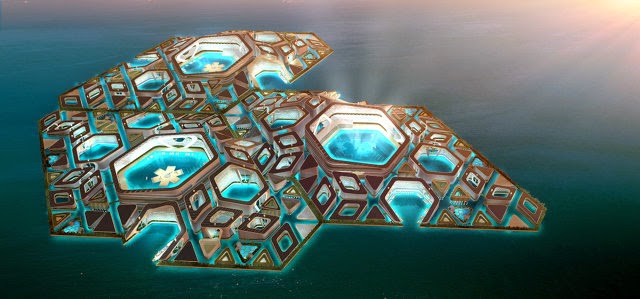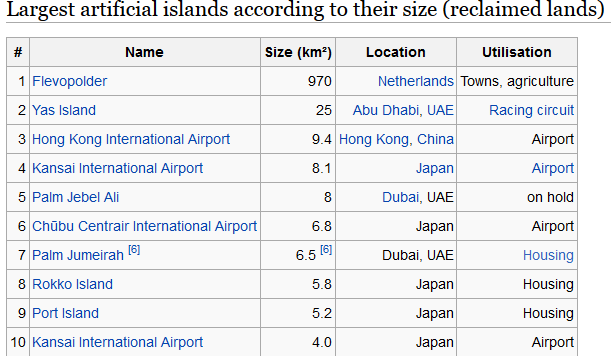| Online: | |
| Visits: | |
| Stories: |

| Story Views | |
| Now: | |
| Last Hour: | |
| Last 24 Hours: | |
| Total: | |
China looking seriously at creating artificial islands that near the scale of Manhattan as they also literally level Mountains for City Space
“When the client came to us and talked about this project, I couldn’t believe it was true until I saw their technology,” says Anthony Phan, an architect at AT Design Office. CCCC, which commissioned the design, is currently building a 31-mile long bridge between Hong Kong and Macau using the same type of floating modules that will make up the new city.
Large prefab blocks join together to form the base of the 10-square kilometer island [Manhattan is 59 square kilometers], which will be filled with everything you'd expect on land. In theory, residents could spend all of their time in the new city.
“People won’t need to commute for jobs on land,” says Phan. “Work, apartments, entertainment and parks are all provided in the floating island.”
A large Chinese property investment firm is reviewing the design now and expected to begin testing some of its components in 2015.
China is among the countries which have built the most artificial land; from 1949 to 1990s, the total area of land reclamations from sea of China was about 12,000 km2 Land reclamation, usually known as reclamation, and also known as land fill (not to be confused with a landfill), is the process of creating new land from ocean, riverbeds, or lake. The land reclaimed is known as reclamation ground or land fill.
Tokyo Bay, Japan had 249 square kilometers reclaimed, including the entirety of Odaiba artificial island.
The largest artificial islands from reclaimed land.
Source: http://nextbigfuture.com/2014/06/china-looking-seriously-at-creating.html





